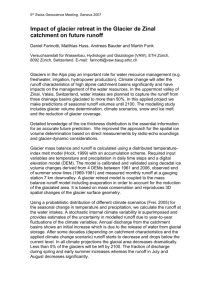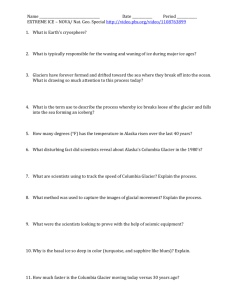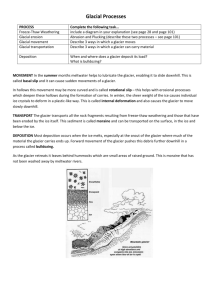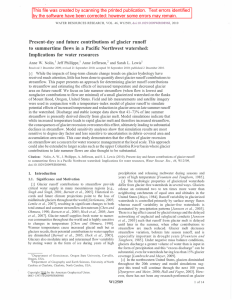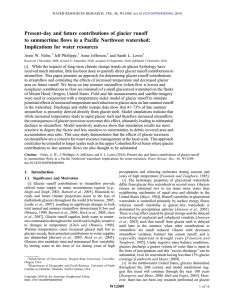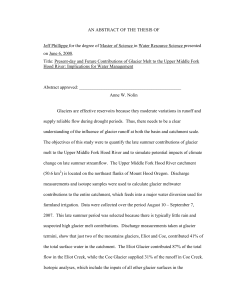Modelling glacier evolution and stream-flow runoff
advertisement
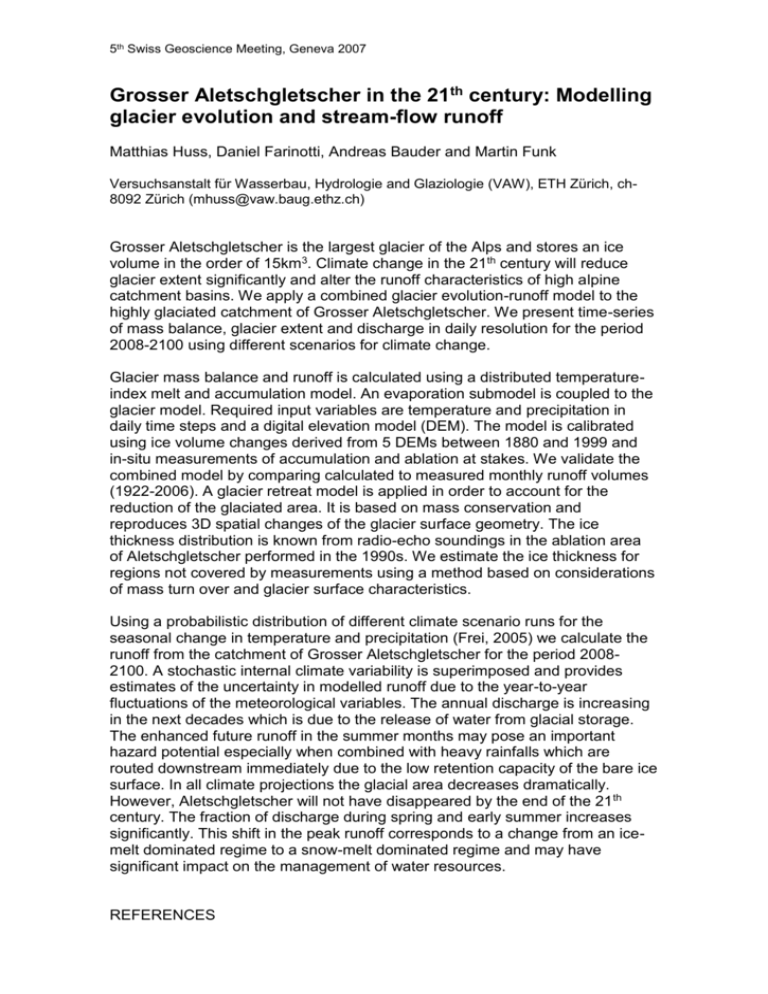
5th Swiss Geoscience Meeting, Geneva 2007 Grosser Aletschgletscher in the 21th century: Modelling glacier evolution and stream-flow runoff Matthias Huss, Daniel Farinotti, Andreas Bauder and Martin Funk Versuchsanstalt für Wasserbau, Hydrologie and Glaziologie (VAW), ETH Zürich, ch8092 Zürich (mhuss@vaw.baug.ethz.ch) Grosser Aletschgletscher is the largest glacier of the Alps and stores an ice volume in the order of 15km3. Climate change in the 21th century will reduce glacier extent significantly and alter the runoff characteristics of high alpine catchment basins. We apply a combined glacier evolution-runoff model to the highly glaciated catchment of Grosser Aletschgletscher. We present time-series of mass balance, glacier extent and discharge in daily resolution for the period 2008-2100 using different scenarios for climate change. Glacier mass balance and runoff is calculated using a distributed temperatureindex melt and accumulation model. An evaporation submodel is coupled to the glacier model. Required input variables are temperature and precipitation in daily time steps and a digital elevation model (DEM). The model is calibrated using ice volume changes derived from 5 DEMs between 1880 and 1999 and in-situ measurements of accumulation and ablation at stakes. We validate the combined model by comparing calculated to measured monthly runoff volumes (1922-2006). A glacier retreat model is applied in order to account for the reduction of the glaciated area. It is based on mass conservation and reproduces 3D spatial changes of the glacier surface geometry. The ice thickness distribution is known from radio-echo soundings in the ablation area of Aletschgletscher performed in the 1990s. We estimate the ice thickness for regions not covered by measurements using a method based on considerations of mass turn over and glacier surface characteristics. Using a probabilistic distribution of different climate scenario runs for the seasonal change in temperature and precipitation (Frei, 2005) we calculate the runoff from the catchment of Grosser Aletschgletscher for the period 20082100. A stochastic internal climate variability is superimposed and provides estimates of the uncertainty in modelled runoff due to the year-to-year fluctuations of the meteorological variables. The annual discharge is increasing in the next decades which is due to the release of water from glacial storage. The enhanced future runoff in the summer months may pose an important hazard potential especially when combined with heavy rainfalls which are routed downstream immediately due to the low retention capacity of the bare ice surface. In all climate projections the glacial area decreases dramatically. However, Aletschgletscher will not have disappeared by the end of the 21 th century. The fraction of discharge during spring and early summer increases significantly. This shift in the peak runoff corresponds to a change from an icemelt dominated regime to a snow-melt dominated regime and may have significant impact on the management of water resources. REFERENCES 5th Swiss Geoscience Meeting, Geneva 2007 Frei, C. (2005). Die Klimazukunft der Schweiz - Eine probabilistische Projektion. Available at http://www.occc.ch, 8pp.
